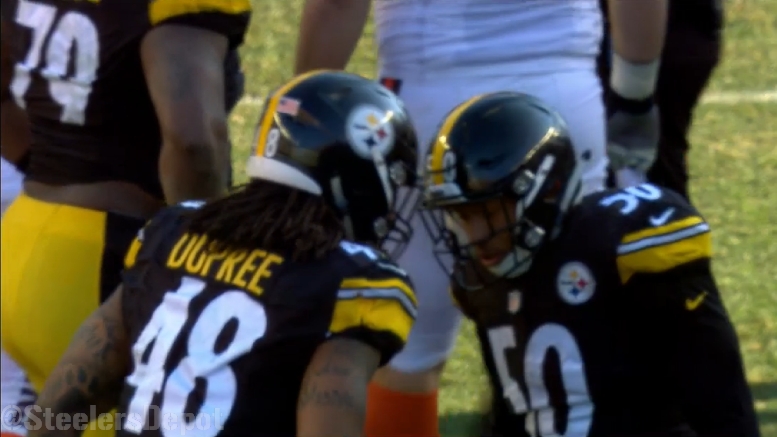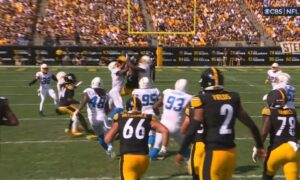Even with the 2018 NFL Draft just around the corner, the hot topic of the day is the Pittsburgh Steelers’ decision to exercise the fifth-year option on the contract of fourth-year outside linebacker Bud Dupree, whom they selected in the first round of the 2015 NFL Draft.
The Steelers had until May 3 to make the decision whether or not to pick up the option, which means that they could have chosen to wait until after the draft and make a judgement based on what they were able to find in this year’s rookie class. They decided that information is not necessary.
Understandably, the aspect that many people are contemplating right now is the injury-guarantee clause in the fifth-year option, given how last season went with Ryan Shazier. The truth is that I don’t believe there is a clear-cut answer as to just how this works, but I am hoping that some case studies can help illuminate just what it means.
According to Article 7, Section 7, Subsection (f)(ii) of the 2011 Collective Bargaining Agreement, a first-round pick’s fifth-year option is “guaranteed for injury-related termination only”. The problem is that there is no part of the agreement that defines an injury-related termination, so we can only go by examples.
Let’s start with the most recent example. The Jacksonville Jaguars elected to pick up quarterback Blake Bortles’ fifth-year option in 2017. He underwent offseason wrist surgery in 2018 to address a recurring problem that could no longer be treated non-surgically.
The Jaguars elected to give him a modest extension instead, and Adam Schefter wrote at the time Bortles’ option “was somewhat of a gamble because the contract was guaranteed for injury, meaning he would be owed the full amount if he cannot pass a physical before the league year starts”. He added that the team would be “prohibited from cutting Bortles while he is hurt or recovering from an injury”.
Let’s go back a year earlier than that when the Buffalo Bills were contemplating the fifth-year option for wide receiver Sammy Watkins. In an article from the team’s website, it reads that the injury guarantee “can be for any injury including the one he’s currently trying to return from. Even a reoccurrence of his foot injury would be covered under the injury guarantee”.
Both Watkins and Bortles were known to have injuries at the time the decision on the fifth-year option was to be made. The Jaguars chose to pick it up, while the Bills did not. Similarly, the Minnesota Vikings did not pick up the option of quarterback Teddy Bridgewater, unsurprisingly, as he is still working his way back from injury. He surely would have triggered the guarantee.
The Vikings also present another case in Sharrif Floyd. The defensive tackle suffered a knee injury in the first game after the team picked up his option in 2016. He underwent meniscus surgery after the season and suffered nerve damage. He never played in 2017, spending the year on the Non-Football Injury List, collecting his injury-guaranteed fifth-year option.
The bottom line is this: we don’t have any concrete language to go on, only media accounts, and these things have a tendency to be vulnerable to challenge. For example, former Cincinnati Bengals quarterback AJ McCarron successfully challenged his status as a restricted free agent this year stemming from his time on the NFI list as a rookie and won his right to unrestricted free agency. It was widely assumed he would be a restricted free agent until it was challenged because it’s an uncommon circumstance that hadn’t been tested and had no precedent.
I can only provide a guess as to what the specific language of the CBA pertaining to this issue means in practice. That’s all any of us can do. The best I can ascertain is that a player may not be suffering an injury that requires rehabilitation, perhaps to the exclusion of elective surgeries.








